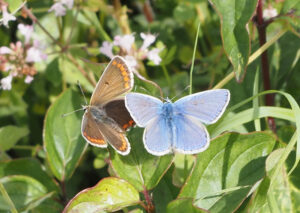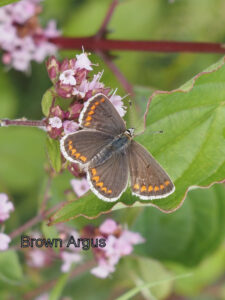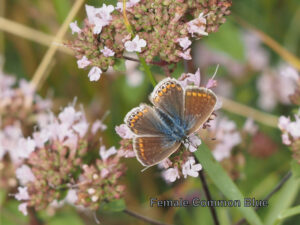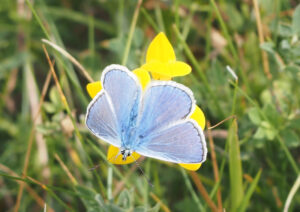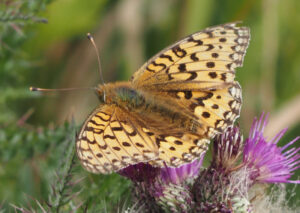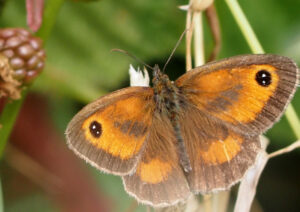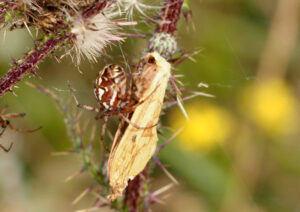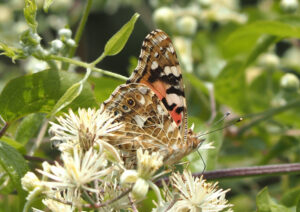This should read “Trip to Old Lodge” but try as we might we could not persuade the Conservators of Ashdown Forest car parking website to accept that the cars registered with them were the same cars as we were trying to pay for, so we decided on a day out on another heathy site at Iping Common. We had a good start en route when a Red Kite landed on the road in front of us to deftly scoop up some road kill but unfortunately Iping didn’t work thanks to the gods of the wind who made it impossible to listen out for the typical birds of that habitat (and it was blooming cold and lacked a café!). So after a short walk we decided to head off to Pulborough Brooks and a much-needed coffee. So who were the “we”? Nige, Debbie, 2 x Janes, John and Brian.

Hearts sank when we arrived at Pulborough where a sign informed us the café was closed Mondays and Tuesdays ……………… but there was a coffee grab point which also sold flapjack. Yihaa! After sustenance we were ready for a second bout of birding and made for the feeding station where you are guaranteed some action. This was totally overgrown so no feeders. “We’re doomed” rang in my pessimistic ear as though Private Fraser was with us. “Don’t panic” countered this in my optimistic ear and indeed won the day.
As we progressed down the hill towards the hides, small birds began to move around the trees and bushes and even sang a few tunes for us. By the time we got to the first hide Long Tailed Tit, Great & Blue Tit, Blackbird, Blackcap, Chiffchaff and of course the ubiquitous Wren had made themselves known. Anyone who came to the play at HBW’s recent talk will resonate with the conversation that took place in the first hide. “There’s a Tufted Duck” said I. “No there’s two” chipped in someone else. “There’s three” from Brian trumped us both. Swans with cygnets were a hit, Jane H was introduced to Gadwalls while Little Egret, Egyptian Goose, Coot, Moorhen, Canada & Grey Lag Geese and Heron were all on show and as we were about to leave some Cattle Egrets flew over far in the distance. The biggest WOW moment was when Jane E spotted an obliging Hobby which flew in close and momentarily landed much to the consternation of the smaller birds.
As we walked towards the next hide Swallows and Swifts were aloft and a Cetti’s exploded in the reeds (its voice that is). While I was fretting that three of the group were taking ages to enter the second hide and possibly going to miss the huge number of Sand Martins flitting over the marsh they were enjoying the fine voice of a Sedge Warbler in an adjoining bush. I missed out on that while they still had plenty of time to enjoy all the Sand Martins! It may have been at this point that Debbie made an official complaint to me that we hadn’t seen a Sea Eagle yet. John had tried his best after spotting a big bird perched up in a far distant tree but on scoping it he discovered it was a Heron.
We moved on and while migrating to the remaining hides we were accompanied by the dulcet tones of Whitethroat and Chiffchaff and the staccato cry of the Debbie when she found us a Rook to add to our growing day’s tally. At the hides were Avocet including one which John spotted sitting on a nest. Both Avocet and Lapwing had a full-time job fending off the Crows. By this time lunch was beckoning and we sauntered back to the visitor centre and had our picnic. This started outdoors but soon moved inside!
After lunch John led us on a walk through the woods and past the heathland where, had we waited till dark, we may have seen and heard Nightjars. What we did hear in the woods was rather splendid though as we had a few breakneck speed bursts from a Garden Warbler to complement the pretty, but less effusive, song of a Chaffinch. The walk was splendid and took in some great views across to the Downs.

By the time we called it a day and returned to Henfield we had forgotten the early bad luck at Iping and remembered a terrific day out at Pulborough Brooks. We had found 55 species of bird across the two sites which was excellent.
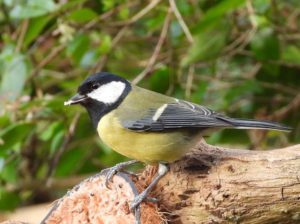 They were all in splendid plumage and at one point I counted five round the feeders. There were Blue Tits, a couple of Long Tailed Tits and a glorious male Greenfinch with his more soberly attired partner. Goldfinches were chattering somewhere close by and Chaffinch, Robin and Dunnock pottered around the ground picking up scraps. We spent quite a while there and were rewarded by the arrival of a smart-looking Nuthatch. I was derogatory about the white Doves which fluttered in but Hilary felt I was being very unfair to them and I had to agree that they did look quite nice.
They were all in splendid plumage and at one point I counted five round the feeders. There were Blue Tits, a couple of Long Tailed Tits and a glorious male Greenfinch with his more soberly attired partner. Goldfinches were chattering somewhere close by and Chaffinch, Robin and Dunnock pottered around the ground picking up scraps. We spent quite a while there and were rewarded by the arrival of a smart-looking Nuthatch. I was derogatory about the white Doves which fluttered in but Hilary felt I was being very unfair to them and I had to agree that they did look quite nice.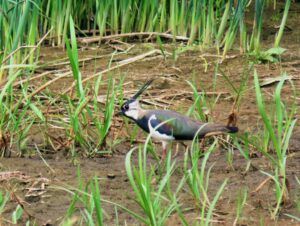
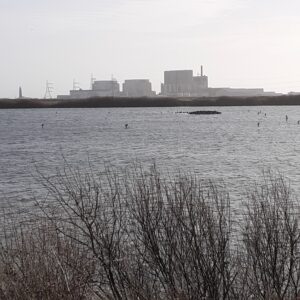
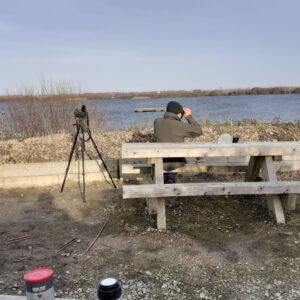

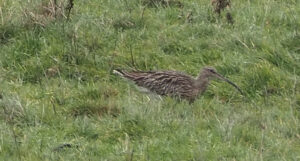 The Curlews were Liz’s favourite bird of the trip and with the scope we were able to get some really close up views. Less easy to spot were three Snipe which are always great to find.
The Curlews were Liz’s favourite bird of the trip and with the scope we were able to get some really close up views. Less easy to spot were three Snipe which are always great to find.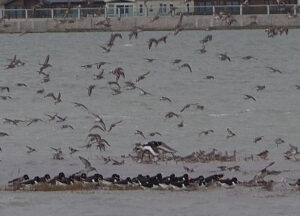 Will next put me in the firing line as I had the scope. Out in the sea channel was a fast-disappearing islet. The tide was high and getting even higher. Lots of waders were zooming round the islet trying to claim squatters’ rites on the fast-receding shore. Long distance wader IDing is not my forte and I am always mentally wishing Mike Russell was with us in these situations but ………. I managed! Oystercatchers were easy but eventually I found large numbers of Grey Plover and a few Black Tailed Godwits. With Will’s help we worked out the tiny birds were all Dunlin. We had hoped for some Ringed Plovers amongst them but you can’t have everything.
Will next put me in the firing line as I had the scope. Out in the sea channel was a fast-disappearing islet. The tide was high and getting even higher. Lots of waders were zooming round the islet trying to claim squatters’ rites on the fast-receding shore. Long distance wader IDing is not my forte and I am always mentally wishing Mike Russell was with us in these situations but ………. I managed! Oystercatchers were easy but eventually I found large numbers of Grey Plover and a few Black Tailed Godwits. With Will’s help we worked out the tiny birds were all Dunlin. We had hoped for some Ringed Plovers amongst them but you can’t have everything.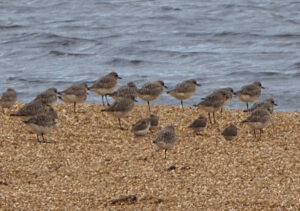 Liz decided to keep moving at this point because it was getting decidedly chilly by the sea. We followed on but got waylaid in an exciting area where raised sand banks had been made in the freshwater scrapes. Here we got really good views of Grey Plover and Dunlin all of which were having a chill out and not scurrying round like they usually do. Amongst the assorted ducks and ubiquitous Brent Geese were a new species, Shovelers. We all decided Liz had made a good choice and set off a bit more rapidly but still found a few additional species on route including Robin, Wren, Pied Wagtail, Dunnock and Great Spotted Woodpecker.
Liz decided to keep moving at this point because it was getting decidedly chilly by the sea. We followed on but got waylaid in an exciting area where raised sand banks had been made in the freshwater scrapes. Here we got really good views of Grey Plover and Dunlin all of which were having a chill out and not scurrying round like they usually do. Amongst the assorted ducks and ubiquitous Brent Geese were a new species, Shovelers. We all decided Liz had made a good choice and set off a bit more rapidly but still found a few additional species on route including Robin, Wren, Pied Wagtail, Dunnock and Great Spotted Woodpecker.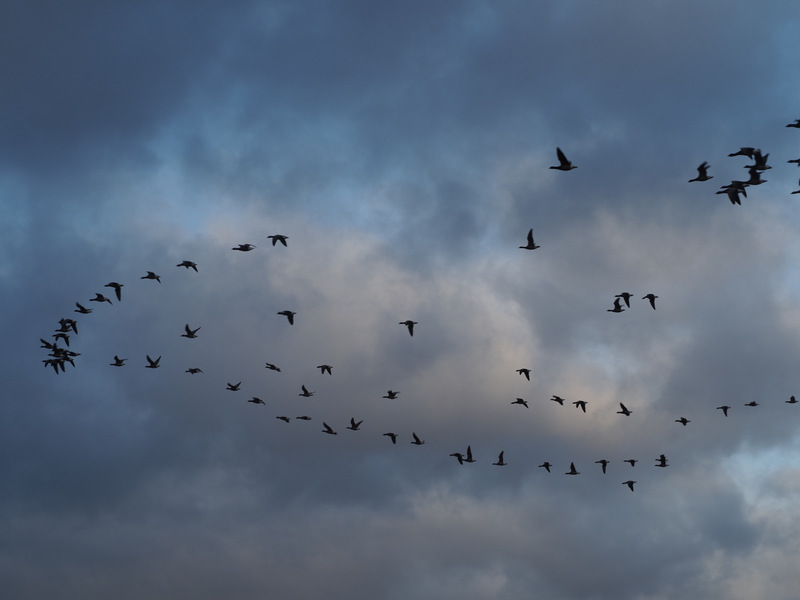
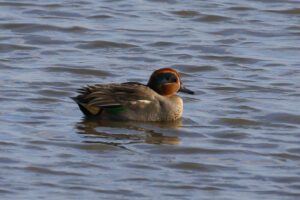
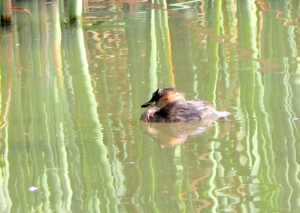
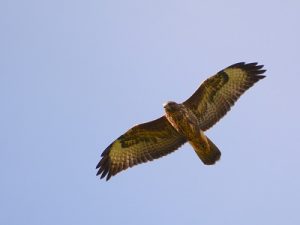
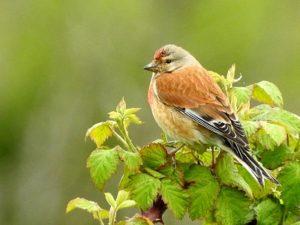
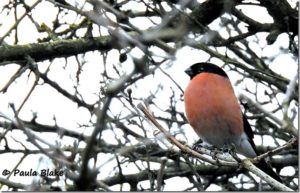
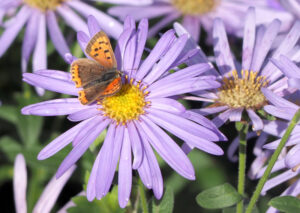
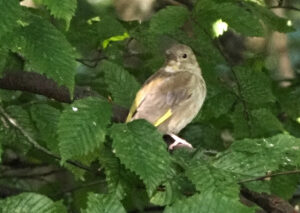
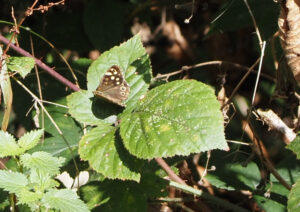
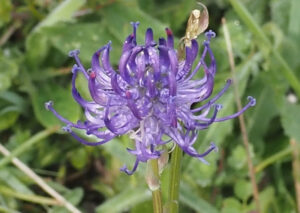 R
R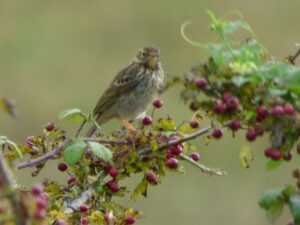 Meadow Pipit
Meadow Pipit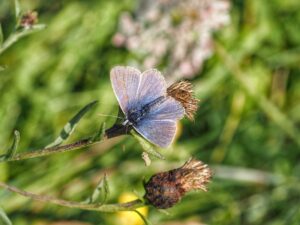 Common Blue
Common Blue 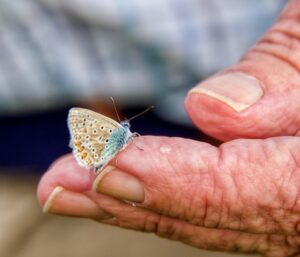 Underside of Common Blue
Underside of Common Blue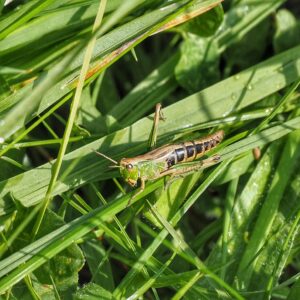
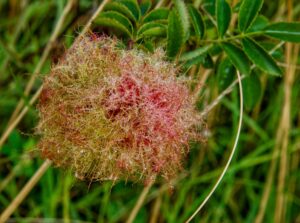 Gall
Gall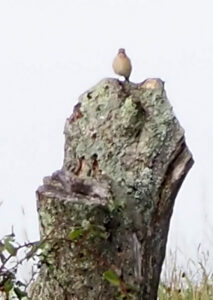 One of the many Redstarts on a stump
One of the many Redstarts on a stump 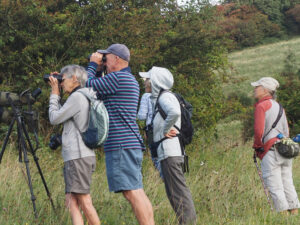 Us looking at him
Us looking at him